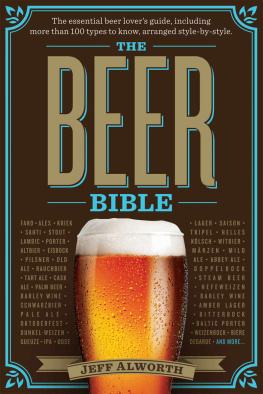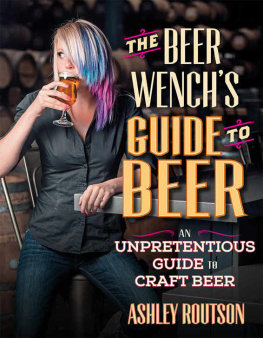THIS AINT THE BEER THAT YOURE USED TO
Dom Doochie Cook
A Broken World Publication
PO Box 11643
Portland, OR 97211
This Aint The Beer That Youre Used To
Copyright 2019 by Dom Doochie Cook
ISBN 978-1-949410-13-6 (ebook);
ISBN 978-1-949410-14-3 (paperback)
Cover Design: Latiesha Cook
Cover Photo & Other Photographs: Russell Breslow
Edited & Formatted by: Christopher Barnes (Cissell Ink), Certified Cicerone & MBAA Beer Steward
All rights reserved.
No part of this book may be reproduced in any form or by any electronic or mechanical means, including information storage and retrieval systems, without written permission from the author, except for the use of brief quotations embodied in critical reviews and certain other noncommercial uses permitted by copyright law. For permission requests, write to the author at beerkulture@gmail.com
All photographs are the property of the copyright holder as marked and used with permission. No photographs may be used or reproduced in any form without express written permission from the copyright holder, except for the use of brief quotations embodied in critical reviews and certain other noncommercial uses permitted by copyright law..
Contents
Dedication
Id like to dedicate this book to my wife, Tiesh; youve held me down for close to two decades. Youve always reminded me that I had more to offer, and when times get hard, you always buckle up for the ride. Youve been ten toes down since the beginning, and for that, Im thankful. I also would like to dedicate this book to my children who have constantly told me that Im a beer king and for being patient and understanding as Ive had to dedicate so much time to work and study. My prayer is that my example will inspire you all to strive for anything you want to achieve. All things are possible. Baby Josh, this book is for you, and your name will always be remembered.
I also would like to dedicate this book to my brother, D. Sparks. My last memory with you was drinking a Guinness in the building lobby. It pains me that we didnt get to spend more time together, but I pray that youre resting in peace, moe.
To the beer industry, thank you for the fire that you constantly light beneath me that pushes me to push back harder for change. If I was comfortable, this book or any of the work that we do wouldnt have been a thought. Oz! Good looking for your help! Youre a real one, and I appreciate you!
And lastly, this book is dedicated to everyone who looks like me. Yes, I want you to know about and enjoy great beer. I also want you to know that no matter where you start it doesnt have to dictate where you finish and that you can get the job done through hard work and integrity all while being true to yourself. And in the process, you can use whatever you have available to spark positive change in the world around you.
Acknowledgments
Credit is due and given to the Cicerone organization, as well as the Beer Judge Certification Program, you both have given me the keys to education that has helped me and will continue to help me help others. Last but not least, shout out to Stephan Mansfield for taking the time to write the story of Guinness that changed my life.
Picture this, a cold winter night in the Soundview section of the Bronx. A group of adolescents clothed in North Face and Sean John snorkels over top of Champion hoodies. Baggy jeans and Timbs piled up in a local project building lobby with no purpose in mind, just living. This was every day for us, winter, summer, spring, fall. It was a way of life, and one thing that was a constant in that daily congregation was, you guessed it, beer. It was usually ten or so 40-ounce bottles of 211, a nasty-ass cheap malt liquor that had a fierce reputation to leave you faded fast. Here and there youd find an Olde English, Colt 45, St. Ides, but usually, it was the trusted and proven good, old 211.
We drank every day, no, not because we loved the taste. Nah, it was because we had no direction and only wanted to hang out and get faded, and 211 did the job and quick! We werent old enough to buy beer and a lot of times we spent our money on other things like weed and getting fresh so when it came time to get beer we boosted it more times than not. No, not stealing in the sense of sneaking it, one of us would brazenly walk into the bodega and walk out with an arm full of 40s, even making multiple trips, daring the employees to say something. Not cool, but this is what it was.
As a youngin, this is how we moved and how we acquired most of the beer we indulged in, but everyone else we knew who indulged actually paid for theirs. I mean, a 40oz beer thats 8% alcohol by volume (ABV) for $2.00? Anyone could buy it even crackheads could hustle enough change to buy a couple a day. Taste what? Taste who? When your only desire is to get twisted who cares about the flavor? Back then, I know I didnt; but now, I damn sure do. These days, I also care about paying for my beer.

Cheap, high gravity beer has been in the inner cities for decades. Conveniently targeting African-Americans and other minorities through physical advertising as well as paid TV and radio ads and programming using the likes of Redd Foxx, Billy Dee Williams, and many other models of color. Its important to note, malt liquor didnt start off this way. It was first marketed to middle-class whites as a premium beer at a higher cost, but they didnt fall for it. Only after realizing they couldnt sell it to their intended audience and that blacks were already buying it did they set their sights on us. If youre old enough, you may remember these ads. But there was a new player on the horizon, plotting out their takeover of this area of the beer industry and the plan was genius. A new, cool, hip, yet super focused set of advertisements from St. Ides malt liquor in the late eighties, early nineties using the likes of Wu-Tang Clan, MC Eight, Ice Cube and tons of other highly influential hip-hop artist of the time took malt liquor to a level where it hadnt been before.
Using hip hop to sell a shit load of nasty beer was an idea birthed by McKenzie River Corporation, a beverage marketing firm owned by marketing wiz Minott Wessinger whose grandfather had his hands in Olde English (OE). Wessingers company also coincidentally released 211 malt liquor, go figure. They used a pocket full of money and genius advertising to attract the urban demographic and lock their competition out by selling cheap malt liquor and flavored non-alcoholic drinks like Crooked I, promoted by the hottest hip-hop artists of the time. Not that they had to worry about too much competition in the first place, since the movement of good, high quality, flavorful beer didnt have the urban demographic on their mind.
This was during one of the first booms of the craft beer industry which got its start (even if a false start) in the 70s. The founders of this movement had grown tired of the yellow, tasteless beer that was being sold to them, and through the likes of people like Michael Jackson (a legendary beer writer-not the legendary pop singer), they were exposed to an array of new beer styles. 1978 marked a new beginning with the changing of a law in America that allowed people to start brewing beer at home (home brewing). These two things set the tone for new visionaries with dreams of brewing beer professionally to open up breweries serving up the freshest, most flavorful beer they could brew. The only catch was, the urban market wasnt their focus.

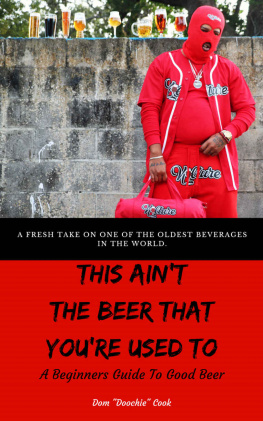


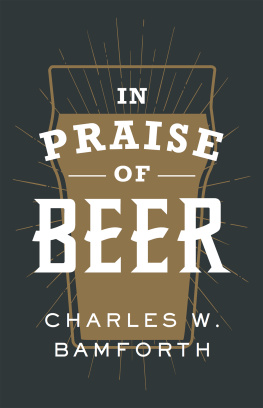
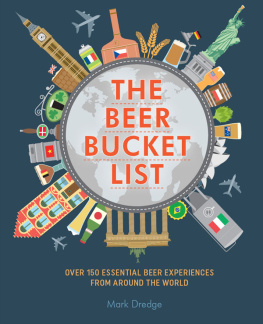
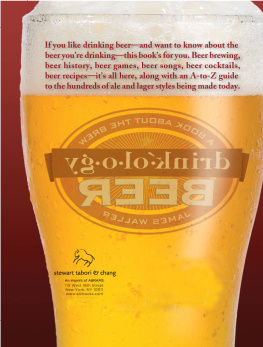
![Willis - Beer: a cookbook: good food made better with beer: [recipes]](/uploads/posts/book/224368/thumbs/willis-beer-a-cookbook-good-food-made-better.jpg)

